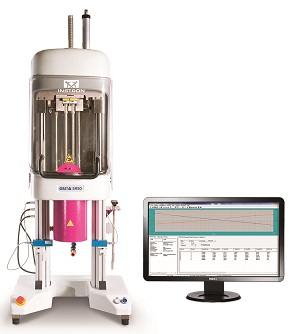Instron, a leading provider of testing equipment designed to evaluate mechanical properties of materials and components, offers VisualRHEO Software, a fundamental part of single-bore and twin-bore capillary rheometer systems.

These systems are designed to investigate the flow behaviour of plastics over a wide range of shear conditions.
The VisualRHEO software, which manages and analyzes data from rheological tests with steps at constant piston speed or shear rate, enables the technician to have full control over gathering data including viscosity, Bagley and Rabinowitsch corrections, and non-Newtonian index calculations. These results are displayed from both a numerical and a graphical point of view. VisualRHEO is compatible with Windows® 2000/XP/Vista/7/8.1 and features:
- Real-time graphic display of the measured quantity
- Post-process graphs of rheological quantities (apparent and corrected values)
- Password-protected operator access levels
- Export to spreadsheets, text files, and LIMS systems
- Test comparison and reference viscosity curves
- Advanced database search
For more advanced capabilities, there are two additional packages available: VisualRHEO Advanced Analysis Package and VisualRHEO Advanced Test Management Package.
VisualRHEO Advanced Analysis Package
- Advanced fitting capabilities on rheological curves, using Polynomial, Power Law, Cross and Yasuda-Carreau equations, and showing related coefficients
- Elongational viscosity estimation, using Cogswell method based on Bagley-corrected shear viscosity data
- Wall-slip speed estimation, using Mooney method based on standard tests with different dies (same L/D but different diameters)
- Viscosity Dependence on Temperature analysis, applying Arrhenius and WLF equations to multiple tests at different temperatures to obtain the viscosity-temperature relationship for each shear rate condition
- Performs also the Flow/No-Flow analysis to estimate the limiting temperature condition for flowing
VisualRHEO Advanced Test Management Package
- Viscosity dependence on time test mode and analysis. This allows the operator to measure viscosity at different times to study the thermal degradation and other time-depending phenomena. The viscosity results are plotted against time.
- Melt fracture test mode, which allows a shear rate sweep of programmable range and speed, aimed at quickly finding the conditions for unstable flow.
- Stress relaxation test mode, which allows the system to keep measuring the pressure and to calculate viscosity after stopping the piston movement, therefore looking at relaxation phenomena of the sample.